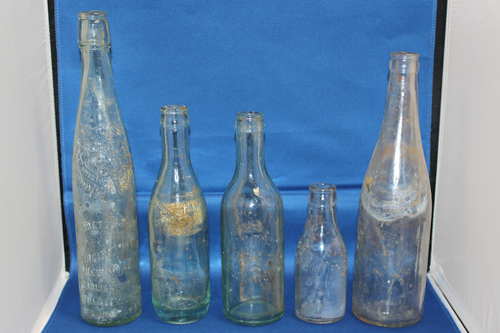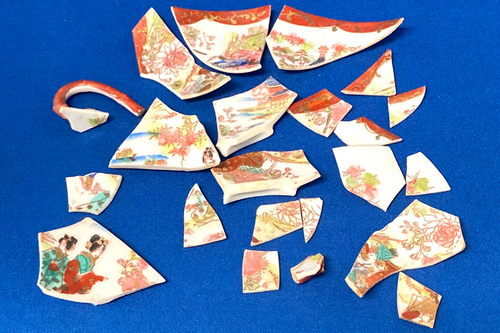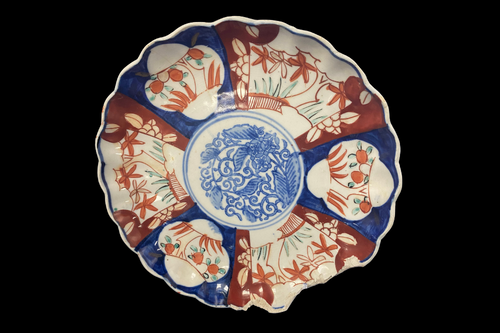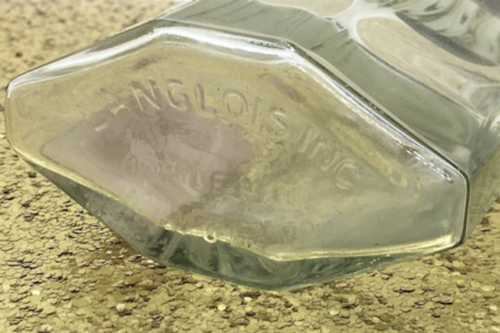
Cosmetics and Wellness
Collections Curiosities is a monthly blog highlighting intriguing artifacts, books, and archival materials that staff, volunteers, and interns have discovered in Center collections and the Center Library. This month, SDAC Volunteer James Sinclair explores beauty and wellness products from a collection recovered from a historic-period site in Oceanside.
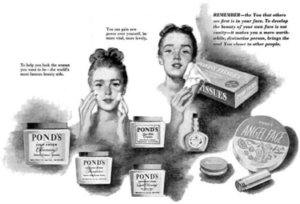
Cosmetics and Wellness
Blog post and artifact drawings by SDAC Volunteer James Sinclair
Beauty and wellness products—from eyeliner to cough remedies—have been used since ancient Egypt. In the ninetheeth century, companies around the world began marketing their skin tonics and face powders to the public. These companies especially targeted women with products to make their skin glow and cuticles shine year after year, and some of those products are still sold to this day. Here are a few found in a Center collection recovered from a historic-period site in Oceanside.
Beauty
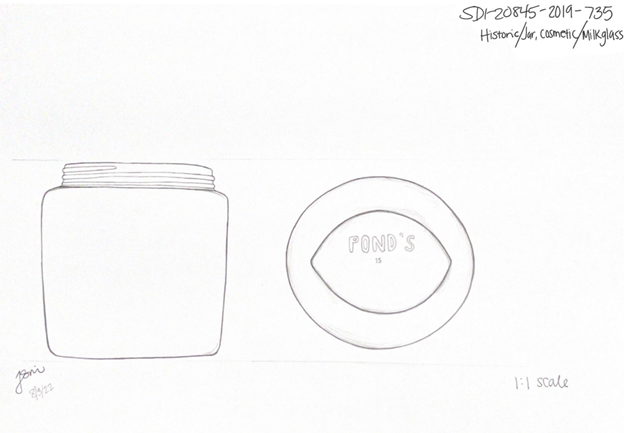
Well-known brands such as Pond’s and Vicks have been in production since the late nineteenth century. One artifact is a lidless glass jar of Pond’s cream. Without the lid, which has always been color-coded by product, it is hard to say exactly which product was found, but it is in excellent condition. Founded by Theron T. Pond around 1846, Pond’s originally sold witch hazel extract. By the 1910s the brand was also selling Vanishing Cream, Cold Cream, and Pond’s Healing Cream. These products were advertised to women especially during World War Two as a way to preserve their femininity while in the workforce, specifically factories.
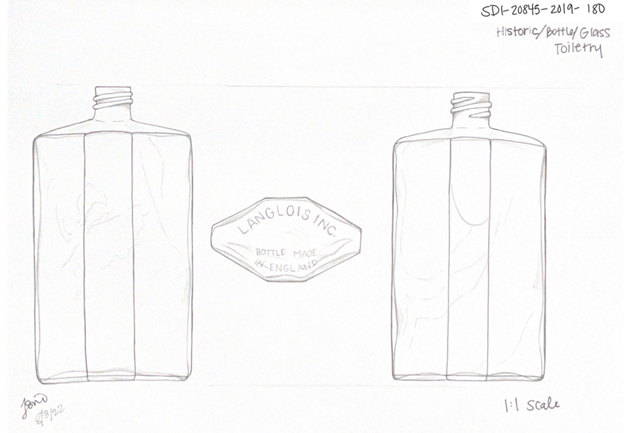
Another artifact is an intact Langlois Inc. astringent bottle from circa 1910 to 1920. The brand is most well-known for their perfumes (sold from 1910 to 1962), beauty creams, powders, and other cosmetics and toiletries. This particular bottle held the Cara Nome Skin Freshener, which was an astringent. It was used in conjunction with a cotton pad to remove old face cream and makeup from the face and was supposed to be used cold.
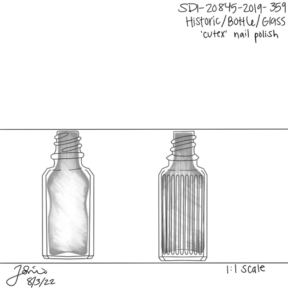
Another artifact is two tubes of Cutex nail polish. Founded by Northam Warren in 1911, Cutex originated as a liquid cuticle remover then added nail tints and lacquers to their product line. These specific tubes are from the 1930s, when reddish colors like coral or cardinal were popular. Nails were meant to match a woman’s outfit and/or lipstick to emphasize style and fashion, and often had a half-moon pattern at the tips and cuticle area. This is also a product heavily marketed to American women joining the workforce during World War Two, and it was advertised to protect their nails in the factory while looking stylish and feminine.
Wellness
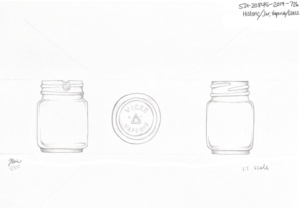
One artifact is a small blue jar of Vicks VapoRub. “Vicks Family Remedies” was founded in 1898, and its first product was Vicks Croup & Pneumonia Salve. Created by the founder Lunsford Richardson for his sick son, it was well-known for its unique “vapors”. The boy recovered, and in 1911, Richardson renamed the product that saved him “Vicks VapoRub”. Vicks went on to create a variety of wellness products such as nasal sprays, cough drops, and DayQuil/NyQuil.
Learn More
Cutex Nail Polish
http://cosmeticsandskin.com/companies/northam-warren.php
Pond’s face creams
https://www.ponds.com/us/en/about-ponds/our-heritage.html
Perfumes Manufactured by Langlois on Cleopatra’s Boudoir blog covering history of perfumes
https://cleopatrasboudoir.blogspot.com/2014/01/langlois-perfumes.html
Vicks VapoRub
https://vicks.com/en-us/vicks-history


